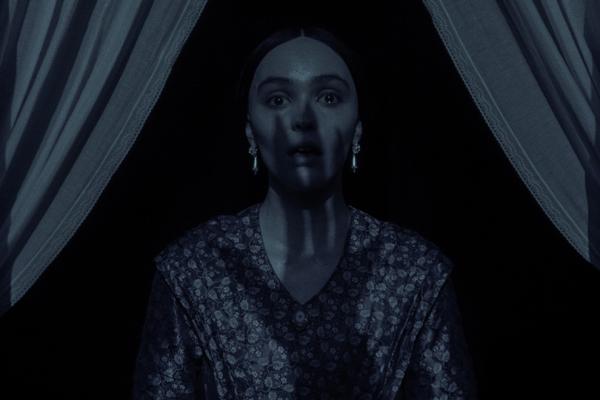In the 2003 action movie The Last Samurai, Tom Cruise slashes his way to victory as the central character in a film loosely based on 19th-century Japan’s transition from feudalism to industrialization. As Cruise becomes enamored with Japanese culture and tradition, it is difficult to ignore the white savior trope of a U.S. soldier rescuing Japan from its internal struggle to modernize. Western depictions of East Asia, especially in popular culture, have long been filled with orientalisms, or cultural stereotypes of an exoticized “Far East,” imagined through the lens of Western consumption. So when I first learned that the 2024 drama Shōgun, which recently won 18 Emmys for its first season, was based on a 1975 novel by British author James Clavell, my initial response was a mix of concern and suspicion. How would an Englishman raised in the 1920s capture the rich history of Japan’s Sengoku period, when feuding warlords struggling for power sought to unify the fractured political landscape of Japan?
Clavell’s ambitious novel does its best to open the reader to 17th-century Japan, but Rachel Kondo and Justin Marks’ adaptation, streaming on Hulu and Disney+, goes above and beyond to give this historical drama an authentically Japanese experience of cross-cultural discovery and political intrigue. With an extraordinarily committed Japanese production crew, every detail of dress, gesture, and custom was carefully researched and recreated with care. By centering Japanese characters and honoring period-specific Japanese language and culture, beautiful storytelling and cinematography come together for a compelling epic.
The drama’s primary storyline follows a bushō (general), his translator, and an English anjin (pilot) during a time of political rivalry after the death of the ruling taikō (regent). As factions jostle for position, unique alliances and creative gamesmanship lead to unexpected relationships and outcomes. The best attribute of FX’s Shōgun is its complex portrayals of the people who give the story its texture and gravitas. Yoshii Toranaga is a powerful warlord and crafty strategist with Toda Mariko, his devoted translator and emissary who is also a Catholic convert. John Blackthorne is the bumbling yet determined British pilot who finds himself navigating a new world while trying to make sense of situations that have clearly gone over his head. Looming in the background is the Portuguese Catholic Church and its entanglement with colonial power, political control, and religious aspiration. Many of Shōgun’s most dramatic moments invite the viewer into a web of relationships and loyalties that ask deep questions of identity, sacrifice, and virtue.
As the layers of these characters unfold and intertwine, we find refreshingly nuanced humans with characteristic depth and contradiction. Lord Toranaga, often appearing stoic and calculating, is also a reflective poet whose intellectual strength and curiosity are more powerful than his army. Lady Mariko, a composed and diplomatic figure from an honored line of Samurai, carries considerable shame and internal conflict over her past while clinging to a Catholic faith she holds as sacred. Portuguese priests and church officials range from manipulative opportunists to trusted confidants, somehow embodying both deception and pastoral sincerity in the same moment.
In a time where seemingly endless streaming entertainment is often dumbed down to its lowest common denominator of simple, flattened characters, Shōgun invests in the development of a narrative world with a complex cast and the highest of stakes. As the political question builds tension over who will succeed in the chess match of a potential civil war, a relational world behind the conflict displays the human intricacies of fidelity and betrayal. Toranaga dreams of “a nation without wars … an era of great peace,” but that vision can only be realized at great personal cost and the considerable courage of Toda Mariko.
As a missiologist and practical theologian, I can’t help but appreciate the multiple depictions of an embodied faith throughout the drama, in patterns of both faithfulness and dysfunction. Colonial Catholicism in this era was rife with rationale widely considered hypocritical today; how could the Portuguese church not see its appetite for land and wealth as problematic? Why did it take nearly 500 years for the Vatican to repudiate the 15th-century Doctrine of Discovery that formed a legal basis for European expansion and exploitation of the “new world” that was neither new nor discovered? At the most basic level, Christian faith is never a self-contained set of ideas or practices that, when adopted, jettisons the former cultural self from existence. Christianity that is incubated in a time of ruthless political ambition will easily adopt the logic of dehumanizing greed and ends that justify the means.
Embodied faith is simply the acknowledgment that Christianity, when shared and enculturated, is grafted into our cultural ways of being — our walking, talking, eating, seeing, and meaning-making in the world. This process of hybridity is always a little messy and brings with it the perpetual and essential challenge of contextualization: How can one be formed by the Christian tradition in order to live faithfully in the way of Jesus, while taking fully into account the complexity of God-given cultural identity?
Father Martin Alvita, a Portuguese priest who baptized Lady “Maria” (Mariko), must protect Portuguese economic interests in Japan, but he also rationalizes political opportunism with the hopes of starting a Catholic church in Edo (modern Tokyo). Even as he schemes to undermine his Protestant enemy Blackthorne, he is an empathetic chaplain to Mariko, whose devout faith keeps her grounded in a world of political violence.
Spoilers for the final episodes of Shōgun follow.
Lady Mariko’s wrestling with shame and suffering brings the church’s morality and the cultural practice of seppuku (ritual suicide) into conflict, yet her character’s arc and heroism do not depend on a binary power struggle between Christianity and Japanese culture. Rather, her attempts to be faithful to both her family’s honor and her Christian baptism lead her down a path that reflects a deeply Japanese contextualization of sacrifice.
In a particular moment of suspense, Mariko must decide whether to take her own life in protest of Lord Ishido (Toranaga’s rival) who is holding Toranaga’s family captive. With her mind made up to do whatever is necessary to actualize Toranaga’s plan to free his people, she tearfully requests Father Alvita for a final confession.
“Bless me Father, for I have sinned. But I can only confess that I am not worthy to confess.”
Recognizing that seppuku would be a grave sin, she tears off the cross she has worn since her conversion and sets it aside to pick up the knife that would honor her sacrifice. Before she can carry out the act, Lord Ishido intervenes, saying that they will release her and the hostages. But soon after, when Mariko and her friends are betrayed by Ishido and once more faced with violence, she willingly lays down her life for others. Moments before a fatal explosion, she calmly lifts her arms in surrender — a clear cruciform symbol in death.
Beyond Mariko, Shōgun depicts other Christians who are flawed but earnest in their dysfunctions. These depictions do not justify the exploits of colonial Catholics or attempt to make a theological statement about the dangers of syncretism. Instead, Shōgun strives for a cultural authenticity that takes the complexity of embodied faith seriously, from the devout selflessness of Mariko to the questionable rationalizations of the Portuguese priests. Some conversions run deeper than others, which again reflects the varied human realities of an incarnational faith.
I hope the success of Shōgun inspires other historical dramas to make the same effort to capture the intricacies of our cultural identities. Even further, as we ponder the future of global Christianity in pluralistic contexts, I hope we can give cultural others the agency and dignity they deserve as they make sense of faith for themselves.
Got something to say about what you're reading? We value your feedback!







